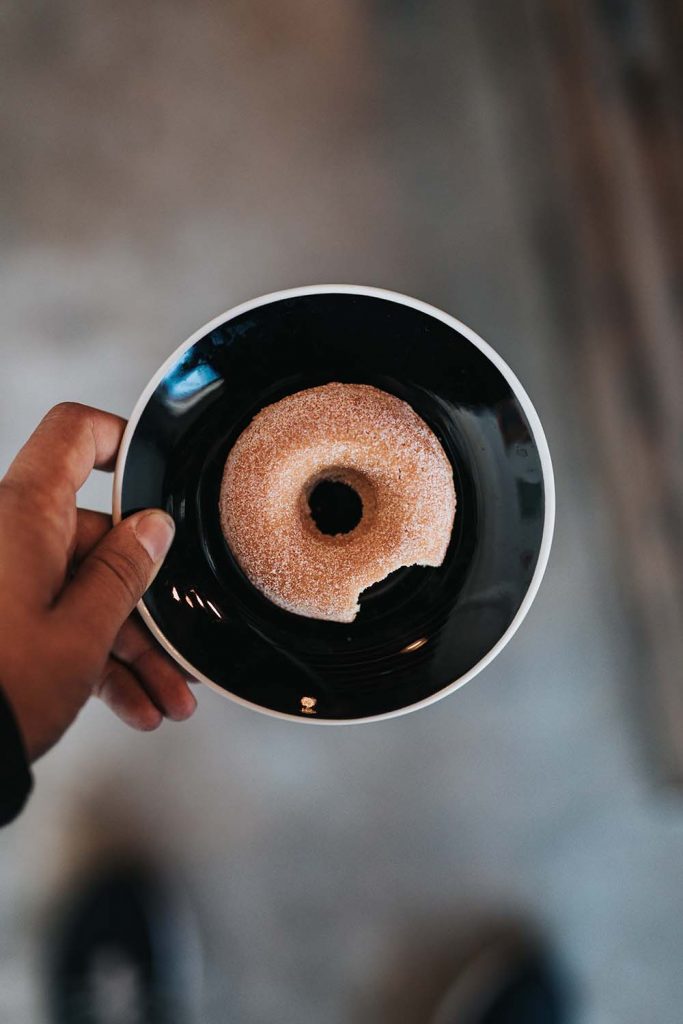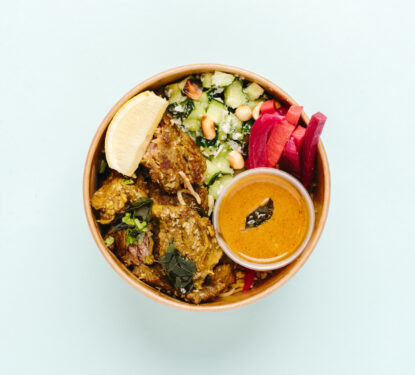
We’ve all heard of mindfulness, the
practice of bringing awareness to the
present moment through observation of our
actions, thoughts and feelings. Mindful eating
applies the same principles, only towards
the foods we eat. So, instead of mindlessly
inhaling a ready-meal while you binge a
Netflix show or answer work emails, we can
make better food choices, enjoy our meals
more, and tune in to ourselves to find out
what our bodies actually need.
Disclaimer: Doing anything mindfully, by definition, takes a lot more time, so it’s not practical for everyone (or anyone really) to apply it to every morsel of food or sip of water we ingest. But a little bit of mindfulness here and there when it comes to your diet can go a long way, with myriad benefits which range from better digestion and fewer cravings, to stress reduction and a better relationship with food.
Here are five ways for you to gradually introduce mindful eating into your daily routine.
Keep a mindful kitchen

Open your fridge or pantry, and take stock of what you’ve got on hand. If anything has been sitting around, unwanted and taking up space, clear it out and replace it with something fresh that inspires you! We give you full permission to replace that stale stack of crackers that hasn’t been touched since 2017 with a delicious, pleasing-to- the-eye pineapple instead.
TRY THIS: Transfer your pantry essentials into coordinated clear containers. You can see what you’ve got clearly AND it makes your kitchen more appealing.
Tune into your food prep
If you normally play podcasts or music as you cook, try turning everything off and tuning into what you’re doing. Pay attention to the colours, the smells, and the sensations of your hands as you prepare everything. Think about where your food came from, and give yourself some space to feel gratitude. Even something as simple as an apple took years in the making to produce, so take a moment to marvel at how amazing that is before you take that first bite.
TRY THIS: Rather than follow a recipe, try to cook something using your instincts. See how well you do!
Create a meal-time ritual

Everyone’s guilty of curling up on the couch to eat in front of the television or computer screen. It’s fine to veg out sometimes, but the honest truth is that food tastes better when you’re actually focusing on it – that’s one of the reasons why restaurant meals taste so much better! (That, and butter… Copious amounts of butter.) Invest in some nice tableware, set the table, and leave your phone in a different room so you can really focus on your plate.
TRY THIS: Try to implement a no-electronics rule at dinnertime, even if you can’t manage it for breakfast and lunch.
Savour every last bite
This may be the most time-consuming, and possibly the most difficult to put into action, but it’s worth it! Take smaller bites than you normally would, and chew at least 20 times before you swallow. Research shows that food tastes better when you chew it longer, thanks to an increased breakdown from digestive enzymes in your mouth. This also means that you’ll digest it better once you do swallow, so less bloating and gas post-meal, too.
TRY THIS: Hop onto YouTube and search for an eating meditation. Give it a go!
Ask yourself why you’re really eating

Are you really hungry? Or could it just be boredom or stress? Food is a comfort for many, and while there’s nothing wrong with that, mindful eating asks us to notice our cravings, and what’s driving them. People’s relationships with food are often complicated, so challenge yourself to explore how you’re feeling when you catch yourself mindlessly snacking or eating. You don’t even necessarily have to stop what you’re doing – just notice without judgment.
TRY THIS: If you find yourself reaching for that chocolate biscuit, grab a drink of water and wait five minutes instead. If the craving is still there, you can decide whether it’s the right time to indulge.
More Fresh Cuts: The Best Plant-Based Proteins in Your Nearest Supermarket






